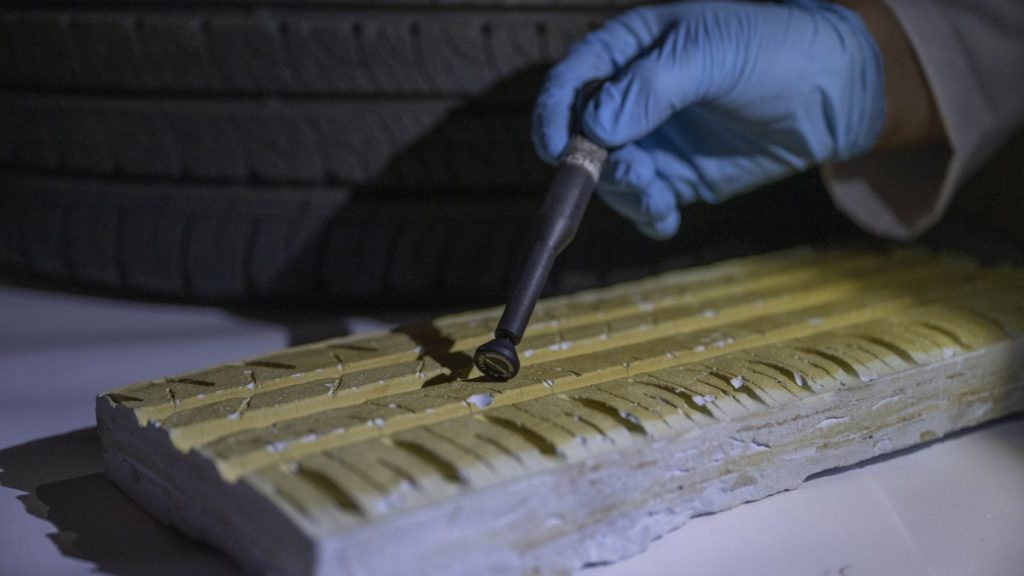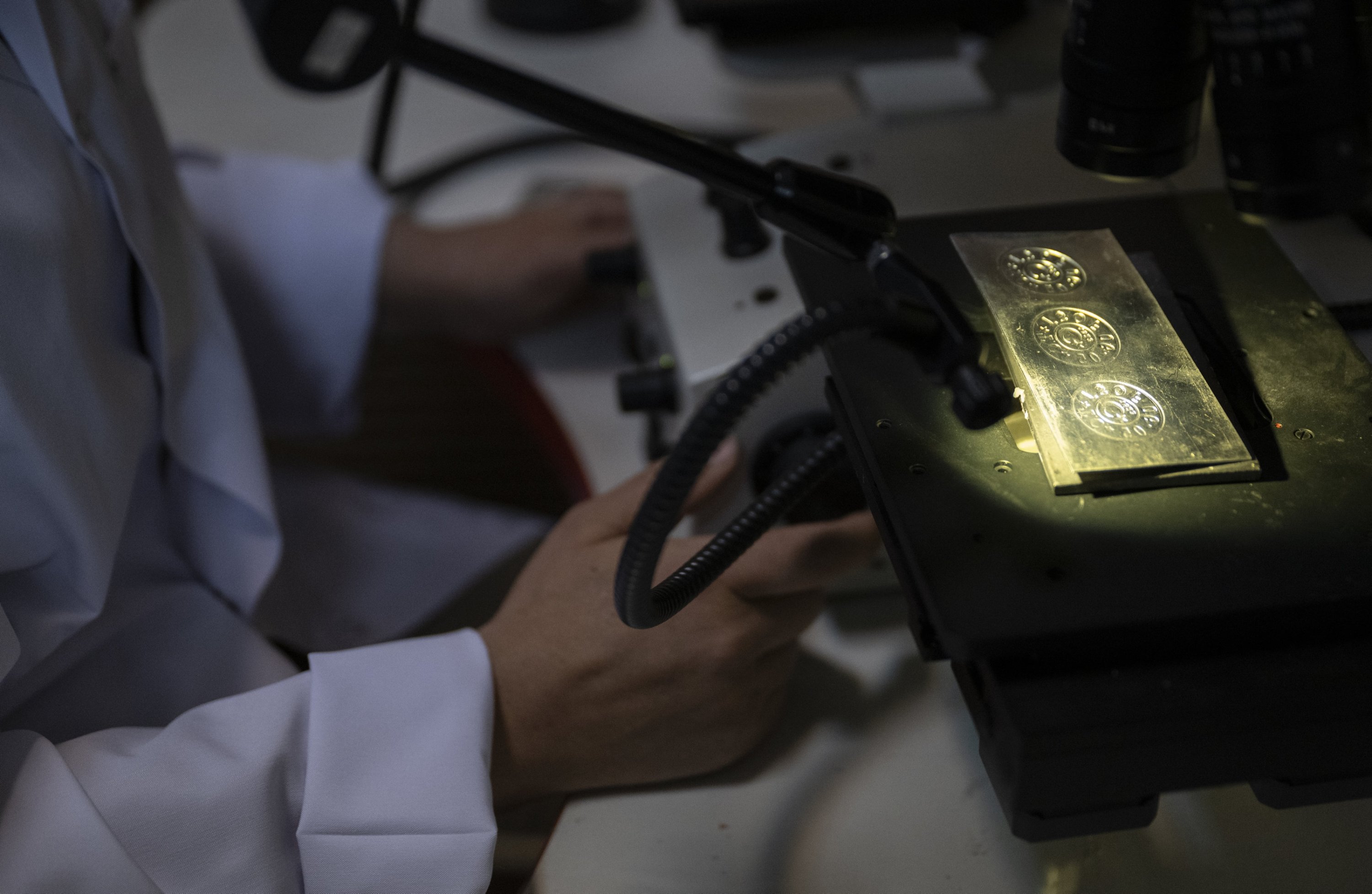The Turkish National Police‘s Criminal Department’s Trace Investigation Unit continues to resolve unsolved cases by meticulously uncovering every clue at the crime scene.
Operating under the principle that “every criminal leaves a trace,” the police’s “evidence hunters” use scientific methods to analyze clues gathered by the crime scene personnel, ultimately linking evidence to perpetrators.
The team conducts detailed investigations in various areas, including tracking shoeprints left by suspects at crime scenes, identifying cutting marks left by knives or similar tools, and examining tire marks left by vehicles involved in the crime. They also trace the paths of suspicious and fugitive vehicles, among other evidence.
In addition to their work on crime scenes, the team plays a key role in identifying stolen or altered vehicles by analyzing engine and chassis numbers. They also contribute significantly to identifying weapons and vehicle parts.
Working with clear and definitive findings, the team reconstructs broken pieces, much like assembling a jigsaw puzzle, to help shed light on crimes.
Simla Yılmaz, deputy chief of the Trace Investigation Unit, spoke to Anadolu Agency (AA) about the work carried out in 10 police laboratories across the country. She emphasized that their primary goal is to contribute to justice by examining physical evidence with the help of technological advancements.
“Our focus is on examining physical evidence and findings using technology to contribute to the pursuit of justice,” Yılmaz said. “We are involved in four primary areas of analysis, and we follow up on cases with the belief that ‘every criminal leaves a trace.'”
Yılmaz also highlighted the detailed investigation of tools used by suspects in crimes like theft, explaining that they use macro-scope devices that magnify items up to 60 times to analyze the evidence.
The team can also investigate independent cases in their laboratories, as Yılmaz explained: “For instance, with a firearm involved in a crime, we perform fingerprint analysis, DNA profiling to check for human fluids, ballistic investigations to determine if the gun is linked to previous cases, and verify if the serial number on the weapon is authentic. Our laboratory can examine a case from different angles and also solve unrelated cases.”
Yılmaz underscored the importance of trace evidence in capturing suspects involved in hit-and-run accidents, especially in cases of fatal or injury-causing traffic accidents. “By analyzing findings such as pieces falling from the vehicle at the crime scene, we compare the data with later police work to determine if the vehicle involved in the incident matches the trace evidence. This helps prove the identity of the vehicle involved.”
In homicide investigations, even the smallest pieces of evidence can play a crucial role, Yılmaz stressed. She shared an example from a case where a suspect killed his sister by stabbing her in the head. Forensic doctors found a shiny fragment in the skull, which led them to identify that the broken tip of a knife at the crime scene matched the metal fragment from the skull.
“By connecting the broken knife tip to the metal fragment found in the skull, we not only identified the weapon used but also confirmed that the suspect, the victim’s brother, committed the crime.”
Yılmaz also discussed the importance of vehicle identification and fraud detection through motor and chassis numbers. She advised citizens to be cautious when purchasing a vehicle.
“Before buying a vehicle, check if the engine and chassis numbers match the registration documents. It is essential to have a professional inspection to ensure no tampering has occurred,” Yılmaz warned. “Be alert for signs of alteration around the chassis number or if the engine number has been erased.”



